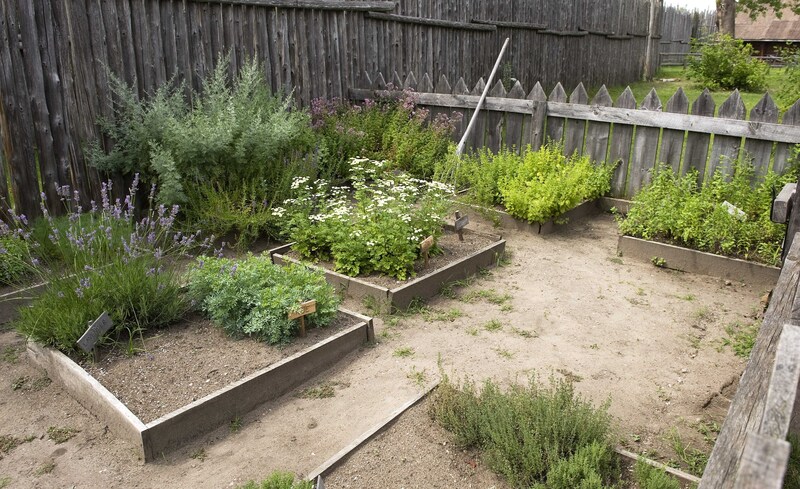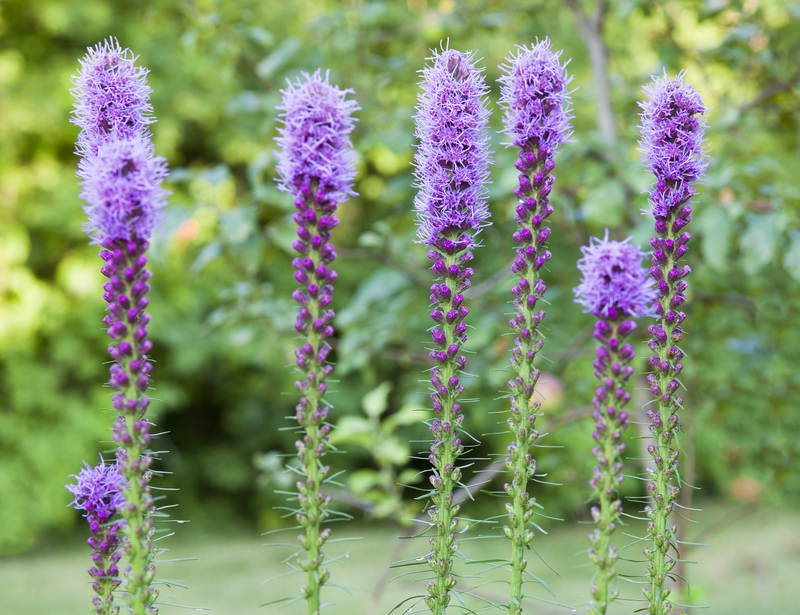Step-by-step guide to orchid maintenance
Posted on 21/05/2025
Step-by-Step Guide to Orchid Maintenance
Orchids are renowned for their striking beauty and exotic appearance, making them one of the most cherished houseplants among garden enthusiasts. However, the reputation for their "picky" care needs often deters beginners. Don't worry! With the right guidance, orchid maintenance is straightforward and highly rewarding. In this comprehensive guide, we'll take you through every stage of caring for your orchids, ensuring they remain healthy, vibrant, and full of blooms year-round.

Understanding Your Orchid
Before diving into daily orchid care routines, it's essential to understand the orchid type you own. With over 25,000 identified species and countless hybrids, orchids come in an impressive variety of shapes, colors, and growth requirements. The most common orchids for home growers include:
- Phalaenopsis (Moth Orchid) - Popular for beginners due to easy care and long-lasting blooms.
- Cattleya - Known for their fragrant, flamboyant flowers.
- Dendrobium - Offers diversity and hardiness.
- Oncidium - Loved for sprays of smaller blossoms.
*Identifying your orchid species helps tailor your orchid care routine to its unique needs.*
Essential Orchid Care Supplies
Gather these supplies for efficient orchid plant care:
- Orchid Pot with good drainage (preferably transparent)
- Special orchid potting mix (bark, sphagnum moss, or perlite blends)
- Fertilizer formulated for orchids
- Sterile pruning shears or scissors
- Misting bottle and watering can
- Humidity tray (optional for dry climates)
Step-by-Step Orchid Maintenance
1. Positioning Your Orchid: Lighting & Temperature
Proper light is crucial for successful orchid care. Place your orchid near a window with bright, indirect sunlight. East or west-facing windows are generally best. Direct exposure to midday sun may scorch the delicate leaves.
- Phalaenopsis prefers low to medium light; avoid hot sun.
- Cattleya and Dendrobium require more light, but still not harsh midday rays.
The ideal temperature varies by species, but most orchids thrive at daytime temperatures between 65-80?F (18-27?C) and night temperatures between 55-65?F (13-18?C). Avoid cold drafts and hotspots near radiators.
2. Watering Orchids Correctly
Watering is a critical aspect of orchid plant maintenance, and improper watering is the top cause of orchid distress. Here's how to do it right:
- Check the potting media before watering; only water when it feels dry an inch below the surface.
- Water deeply, allowing water to drain completely from the bottom of the pot.
- Avoid letting the plant sit in standing water, which causes root rot.
- Most orchids need watering once per week; adjust frequency depending on humidity and season.
- Use room-temperature, filtered or rainwater for best results.
3. How to Maintain Humidity & Air Circulation
Orchids naturally grow in humid environments. Replicate this by:
- Misting the leaves lightly every few days, especially in dry indoor conditions.
- Placing a humidity tray with pebbles and water beneath the orchid pot.
- Grouping orchids together to raise ambient humidity.
- Ensuring air circulation around the plant to prevent fungal issues; a small fan in the room works wonders.
4. Feeding: Fertilizing Orchids
Regular feeding supports robust orchid growth and beautiful blooms. Choose a balanced orchid fertilizer (such as 20-20-20, diluted to half-strength).
- Fertilize once per month during active growth (spring and summer).
- Reduce or pause feeding during dormant periods (typically fall and winter).
- Avoid overfertilizing - too much fertilizer will harm roots.
Remember the popular phrase: "Feed weakly, weekly!"
5. Pruning, Trimming, and Deadheading
Maintenance isn't only about watering and feeding. Pruning enhances health and encourages blooms:
- Remove dead or yellowing leaves carefully with sterile scissors.
- After flowering, prune spent flower spikes back to just above a healthy node for possible reblooming (especially for Phalaenopsis).
- Trim away dried or decayed roots when repotting.
Always sanitize tools before use to prevent infections.
6. Orchid Repotting Step-by-Step
Repotting is an integral part of orchid maintenance, ensuring the plant isn't crowded and roots remain healthy. Most orchids need repotting every 1-3 years. Here's how:
- Gently remove the orchid from its pot and tease away old potting mix from the roots.
- Trim off dead, brown, or mushy roots using sterile shears.
- Select a new pot just big enough for the root ball with room for growth.
- Fill the bottom with a fresh orchid mix (bark, moss, or perlite blends).
- Place the orchid in the center and fill around the roots, securing the plant but not packing the media tightly.
- Water lightly after repotting and keep in a shaded spot for a few days to recover.
Tip: Repot right after the flowering cycle, when the plant enters its growth phase.
Orchid Blooming Cycle: Encouraging Re-Blooming
Many growers struggle to rebloom their orchids after the first flush of flowers. Here are secrets to successfully encourage another bloom:
- Let the plant rest after flowers fade, reducing watering and fertilization.
- Provide a slight temperature drop at night (about 10?F less than daytime), mimicking natural cycles.
- Bright, indirect light is crucial - too little will inhibit flower spike formation.
- If your orchid is healthy and mature, reblooming can occur within 6-12 months.
Patience is key! Orchids often require the right conditions and a bit of time before rewarding you with new blooms.
Common Orchid Problems and Solutions
Even with optimal care, orchids can face challenges. Here's a quick reference on orchid plant issues and troubleshooting:
- Wrinkled or limp leaves: Underwatering or root issues. Check root health and watering habits.
- Yellowing leaves: Natural for lower leaves; if widespread, could indicate overwatering, disease, or excessive light.
- Mushy or black roots: Root rot from poor drainage or overwatering. Repot and trim dead roots.
- No blooms: Insufficient light or interruptions in rest periods.
- Sticky residue or spots: Pest infestations. Rinse leaves and use an appropriate, gentle insecticide if needed.
Seasonal Orchid Maintenance Tips
Your orchid's maintenance routine should adapt to the seasons:
- Spring & Summer: Increase watering and fertilizing as orchids grow actively. Move to a spot with slightly more light, but shield from strong midday sun.
- Autumn: Begin to reduce water and fertilizer. Some orchids enter dormancy -- this is normal.
- Winter: Monitor for cold drafts and reduce watering to avoid soggy roots. Make sure light levels remain sufficient; consider supplemental lighting if days are short.
Orchid Maintenance Myths Busted
- Myth: Orchids are too delicate and only for experts.
- Truth: With correct guidance and a little consistency, anyone can successfully keep and enjoy orchids at home!
- Myth: Orchids need to be watered with ice cubes.
- Truth: Ice cubes can shock orchid roots. Instead, water thoroughly and infrequently as described above.

Top Tips for Long-Term Orchid Care Success
- Observe your orchid regularly - it will "tell" you if something's wrong via its leaves and roots.
- Keep a simple care checklist for each of your orchid species.
- Don't move orchids too frequently; they thrive on stability.
- Enjoy the process of learning about your plant; every orchid is unique.
- Consult local orchid societies, forums, and reputable gardening sources for ongoing support.
Conclusion: Enjoy the Rewards of Healthy Orchids
With this step-by-step guide to orchid maintenance, both beginners and seasoned enthusiasts can enjoy the graceful elegance and enduring blooms of orchid plants. The key is simple: understand your orchid's needs, establish a regular care routine, and watch for signs that adjustment is needed. By following the detailed instructions above, you'll transform your orchids into breathtaking centerpieces that will thrive for years. Happy growing!
Share your own tips or orchid care stories below, and don't hesitate to reach out for specific orchid maintenance advice!

